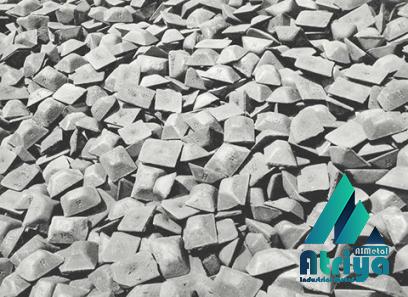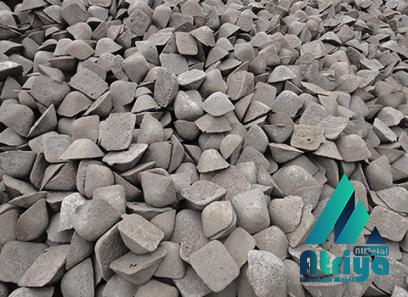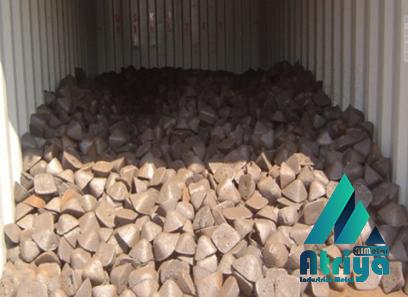Understanding the Key Differences in the Iron and Steel Industry In the world of iron and steel manufacturing, two terms that frequently come up in discussions are “pig iron” and “steel.” While the two are connected by their origins, they have distinct differences that are important to understand. Pig iron and steel are both products of the iron-making process, but they differ in terms of composition, properties, and uses. Let’s take a closer look at the key differences between these two materials. Composition: Pig iron is a crude form of iron that is produced by smelting iron ore with coke or charcoal in a blast furnace. It contains a high amount of carbon (around 3-4%), along with impurities such as sulfur, phosphorus, and silicon. Steel, on the other hand, is an alloy of iron and carbon, typically containing less than 2% carbon.

.
 It undergoes additional refining processes to remove impurities and achieve predetermined carbon levels. Properties: Due to its high carbon content and impurities, pig iron is characterized by its brittleness, hardness, and low melting point. It is not suitable for most practical applications due to its limited strength and inability to be easily shaped or molded. In contrast, steel is renowned for its exceptional strength, ductility, and versatility. By controlling the carbon content and adding other alloying elements, steel can be customized to possess a wide range of mechanical properties. Uses: Pig iron is primarily used as a raw material for steel production. It undergoes further processing in steelmaking furnaces, where impurities are removed, and carbon levels are adjusted to yield steel with specific properties.
It undergoes additional refining processes to remove impurities and achieve predetermined carbon levels. Properties: Due to its high carbon content and impurities, pig iron is characterized by its brittleness, hardness, and low melting point. It is not suitable for most practical applications due to its limited strength and inability to be easily shaped or molded. In contrast, steel is renowned for its exceptional strength, ductility, and versatility. By controlling the carbon content and adding other alloying elements, steel can be customized to possess a wide range of mechanical properties. Uses: Pig iron is primarily used as a raw material for steel production. It undergoes further processing in steelmaking furnaces, where impurities are removed, and carbon levels are adjusted to yield steel with specific properties.
..
 Once transformed into steel through the refining process, it becomes a vital material used in various industries, including construction, automotive, machinery, and infrastructure. Cost: Another notable difference between pig iron and steel lies in their production costs. Pig iron is relatively inexpensive to produce due to its less refined nature, crude composition, and limited usability. The refining processes required to transform pig iron into steel add value to the material but also increase its cost. Steel production involves additional steps, such as desulfurization, decarburization, and alloying, which contribute to the overall expense. Environmental Impact: From an environmental standpoint, steel production has a more favorable profile compared to pig iron.
Once transformed into steel through the refining process, it becomes a vital material used in various industries, including construction, automotive, machinery, and infrastructure. Cost: Another notable difference between pig iron and steel lies in their production costs. Pig iron is relatively inexpensive to produce due to its less refined nature, crude composition, and limited usability. The refining processes required to transform pig iron into steel add value to the material but also increase its cost. Steel production involves additional steps, such as desulfurization, decarburization, and alloying, which contribute to the overall expense. Environmental Impact: From an environmental standpoint, steel production has a more favorable profile compared to pig iron.
…
 The carbon content in pig iron releases a significant amount of CO2 during the smelting process, contributing to greenhouse gas emissions. In contrast, modern steelmaking techniques have greatly reduced carbon emissions, making steel a greener and more sustainable choice. In conclusion, while pig iron and steel share a common origin in the iron-making process, they possess distinct characteristics that make them suitable for different applications. Pig iron serves as a crucial raw material for steel production, while steel offers superior strength, ductility, and versatility. Understanding the differences between these two materials is essential for businesses operating in the iron and steel industry, allowing them to make informed decisions about material selection, cost, and environmental impact.
The carbon content in pig iron releases a significant amount of CO2 during the smelting process, contributing to greenhouse gas emissions. In contrast, modern steelmaking techniques have greatly reduced carbon emissions, making steel a greener and more sustainable choice. In conclusion, while pig iron and steel share a common origin in the iron-making process, they possess distinct characteristics that make them suitable for different applications. Pig iron serves as a crucial raw material for steel production, while steel offers superior strength, ductility, and versatility. Understanding the differences between these two materials is essential for businesses operating in the iron and steel industry, allowing them to make informed decisions about material selection, cost, and environmental impact.











Your comment submitted.